
Food waste
Saving food and helping people
A visit to "Tischlein deck dich": members of the FMC Executive Board support the team on site.
navigation
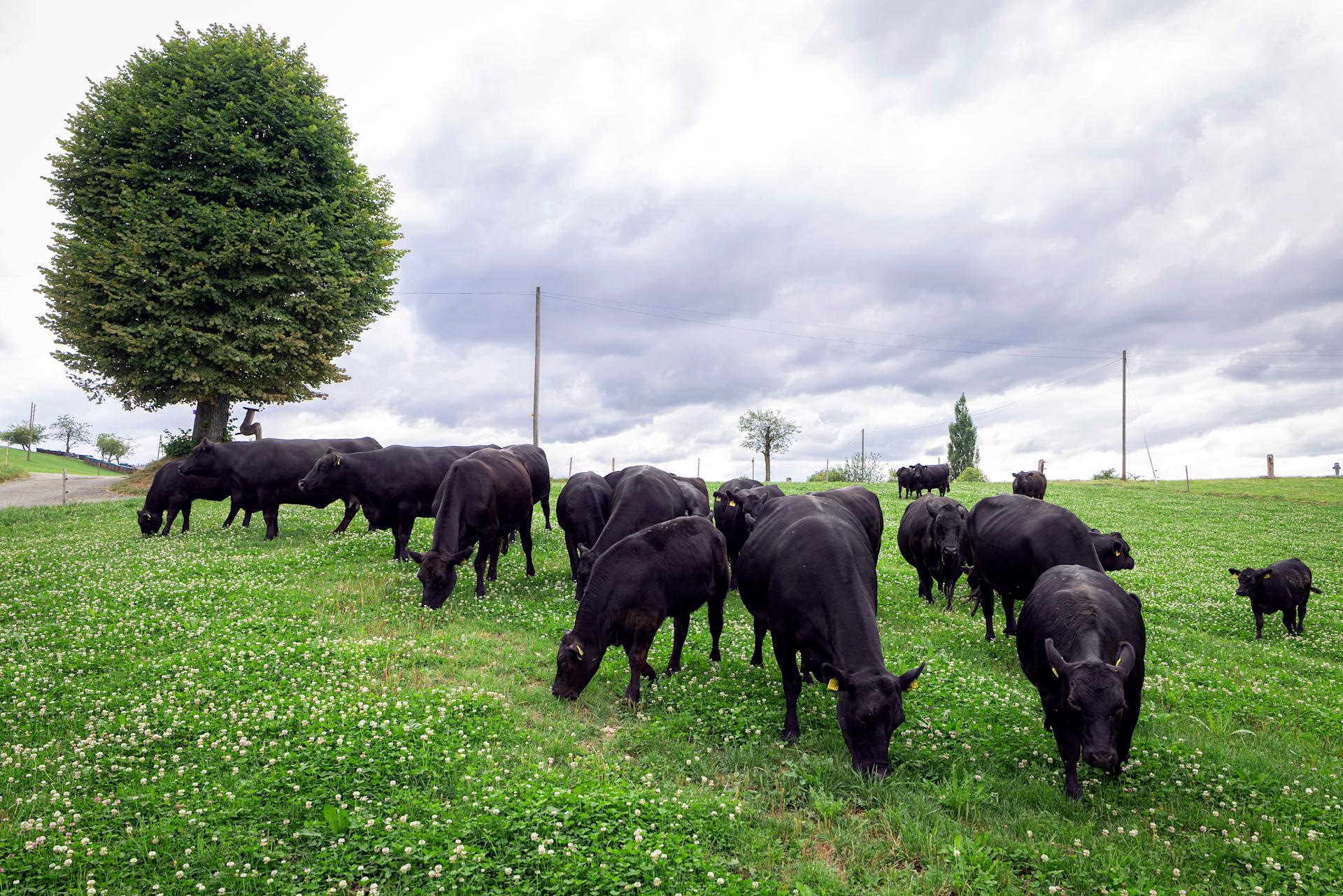
Animal welfare
Things couldn’t be more natural: the Röthlisberger family’s cattle in Eriswil spend as much time as possible on the pasture and feed on grass. Migros, too, is fully committed to “Swiss Black Angus”.
Highspeed is not there today. The breeding bull is only to be found on the Röthlisberger family farm when he is brought in to service the cows. As a result, in the cosy barn of the Hegen farm in Eriswil BE, Amanda, Hirta, Rafaela and 14 other suckler cows chew, doze and moo alone with their offspring.
It’s the height of summer and it’s been around 30 degrees outside for days. This is why Black Angus cattle spend the hottest hours indoors, where they are protected from the sun and heat. “After all, they’re wearing a black sweater. At the moment, nobody goes out voluntarily,” says Christoph Röthlisberger, who runs the farm with his wife Karin and their children Levin, Noemi and Janis. And so the cows are currently turning night into day.
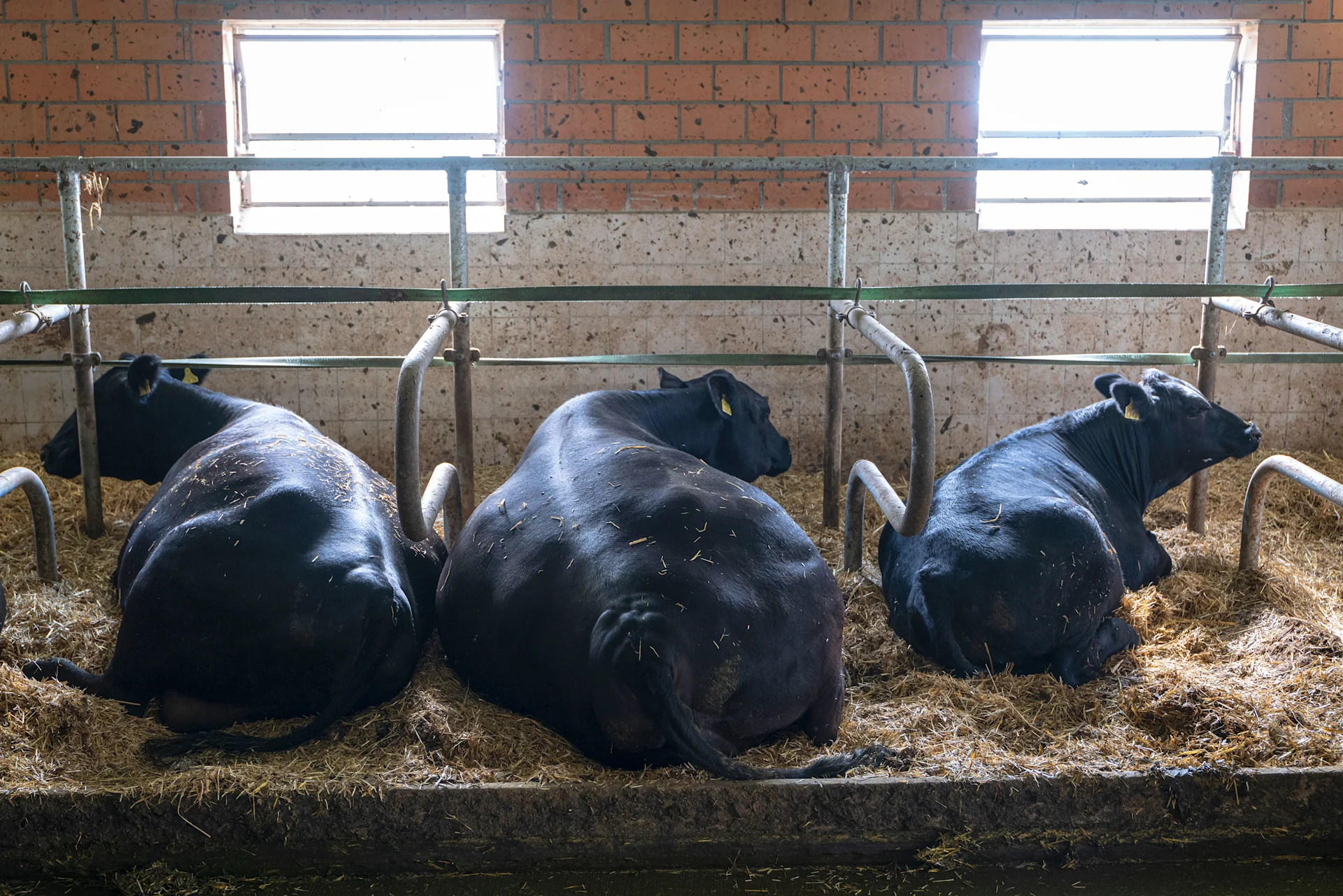
It’s 5.00 p.m. It’s either the familiar voice of the farmer or an internal clock that makes the first animals get up and start looking a bit more attentive. They seem to know that it’s time to go out to pasture. Rise and shine, it’s evening time.
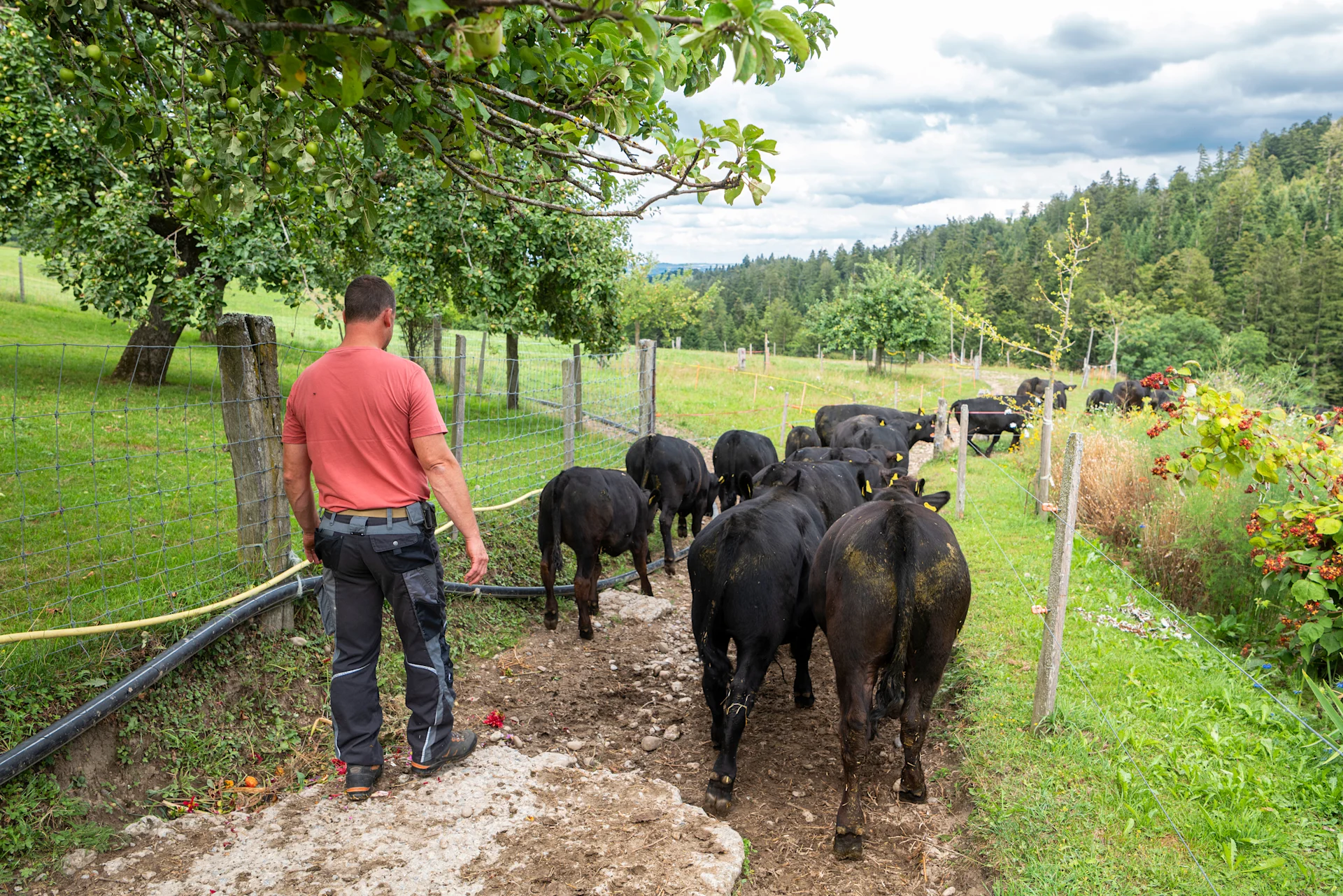
“Chum, chum, chum!” shouts the farmer as the massive yet stately animals with shiny black coats trot leisurely out of the barn. There is certainly no trace of high speed here. “Husch, husch, husch, come on!” the farmer urges, coaxing the cows and their 16 calves to make the short journey from the barn to the pasture. The Röthlisbergers’ farm covers 16 hectares, of which around 1.5 hectares are used to grow IP-Suisse wheat – the rest is pastureland and meadows. The animals are now spread out on a fresh part of the pasture where lush grass grows tall.
Here they stay and eat until 8 o’clock the next morning, when someone from the family takes them back to the cool barn. As soon as the temperatures drop, the cows don’t come in at all, but stay in the pasture 24/7. Until the first snow comes and there’s not much left to graze in the meadow.
“Black Angus are very natural animals,” says Röthlisberger. They feed on what grows in the meadows and what the mother cows’ udders provide. They don’t need maize from the silo, nor concentrated feed, “yet they still fatten up”. The cattle, whose meat is sold under the “Swiss Black Angus” label, spend their lives in the greatest possible freedom. A mother cow only gives birth to one calf a year. “What is special about this breed is that the mothers look after their calves very well,” says the farmer. “Unlike dairy cows, Black Angus cows behave according to their nature.” In terms of animal welfare and sustainability, this type of husbandry is the best there is, he believes. The guidelines for this are provided by the “IP-Suisse” and “Swiss Black Angus” labels.
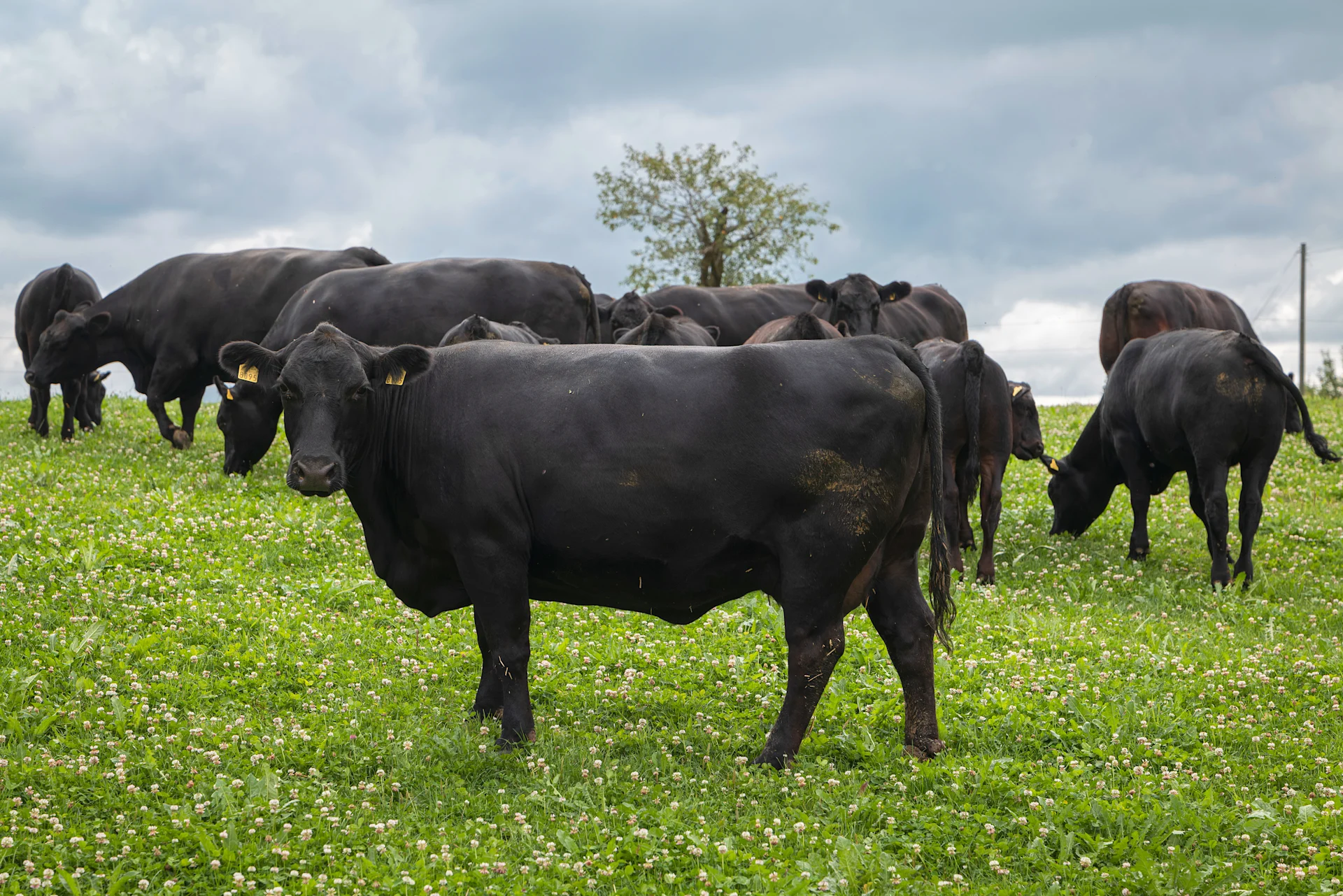
While the 17 suckler cows have been living with him since 2019 – i.e. since the farmer switched from dairy cows to Black Angus – the young animals will eventually leave the farm for the slaughterhouse. Röthlisberger sells most of the meat produced to “Swiss Black Angus”, and from there it finds its way into Migros stores.
“The ‘Swiss Black Angus’ range combines the best-quality taste with the highest standards of animal welfare and sustainability,” says Melanie Chaves, who is responsible for the entire meat range at Migros. She sees the future in this product: “Meat consumption will change. How the animal lived is becoming increasingly important.”
With ‘Swiss Black Angus’ you get the highest possible animal welfare.
IP-Suisse farms also promote biodiversity. “80 percent of Switzerland’s agricultural land is suitable exclusively for meadows and pastures – the perfect habitat for these cattle, which make optimum use of the grass,” says Bernhard.
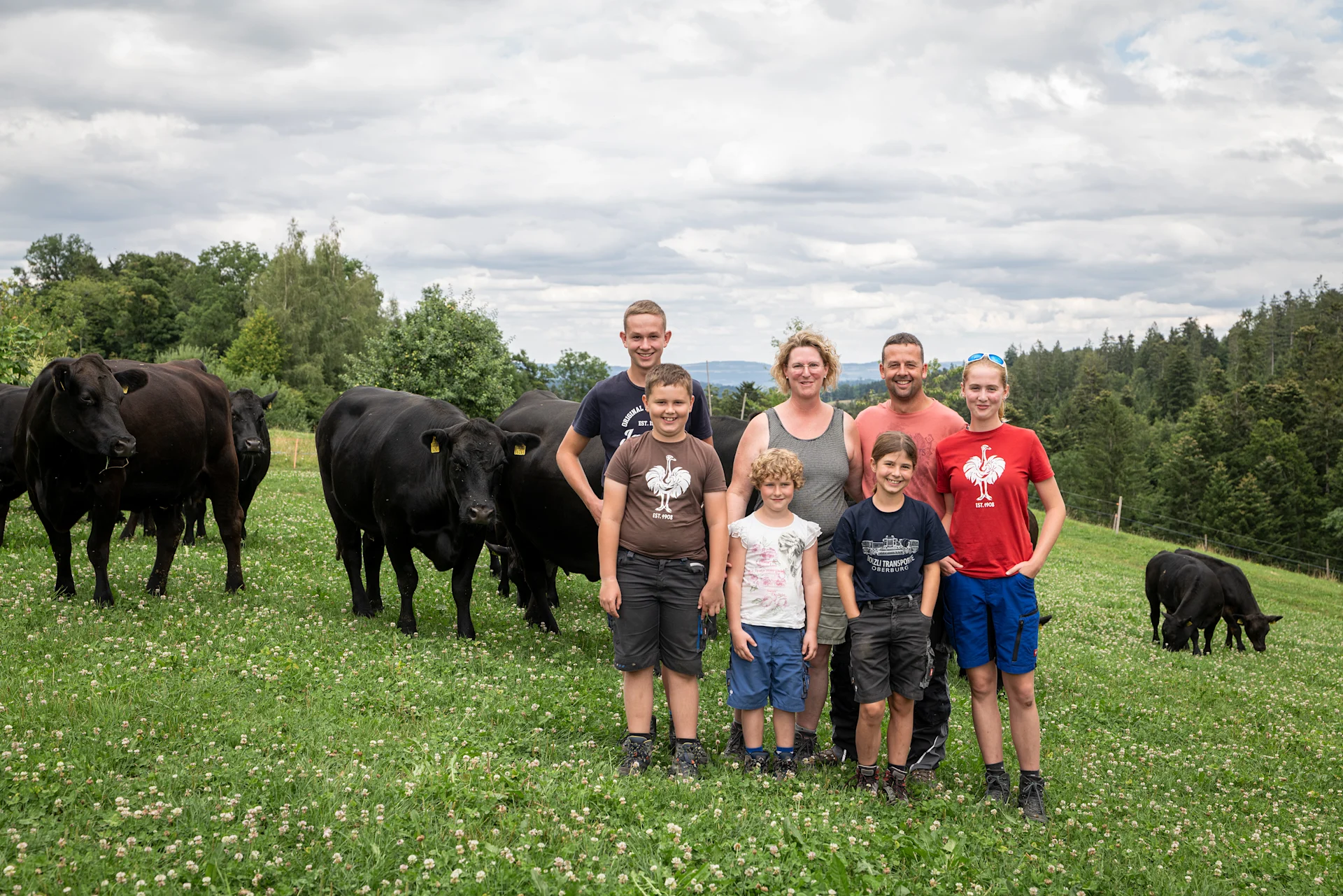
This makes it possible to offer customers beef that checks all the important boxes.” It is important to the Röthlisberger family that the animals have a good life with them. “I always say: as a family, we belong to the herd – and not the other way around.” Christoph Röthlisberger strokes the coat of a curious cow. When a new calf is born, the name of the new member of the herd is discussed at the family table. They are then called Anna, Gregg or Jeremy – one of the few differences from life in the wild.
Discover exciting stories about all aspects of Migros, our commitment and the people behind it. We also provide practical advice for everyday life.